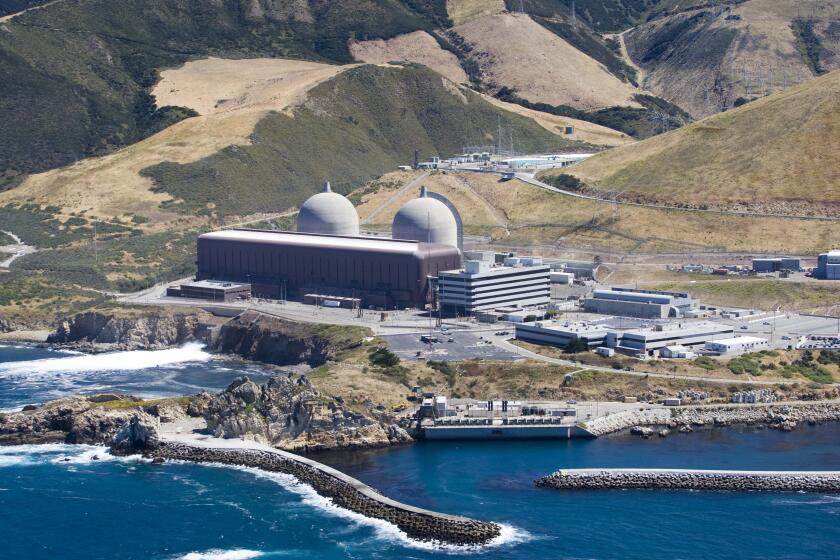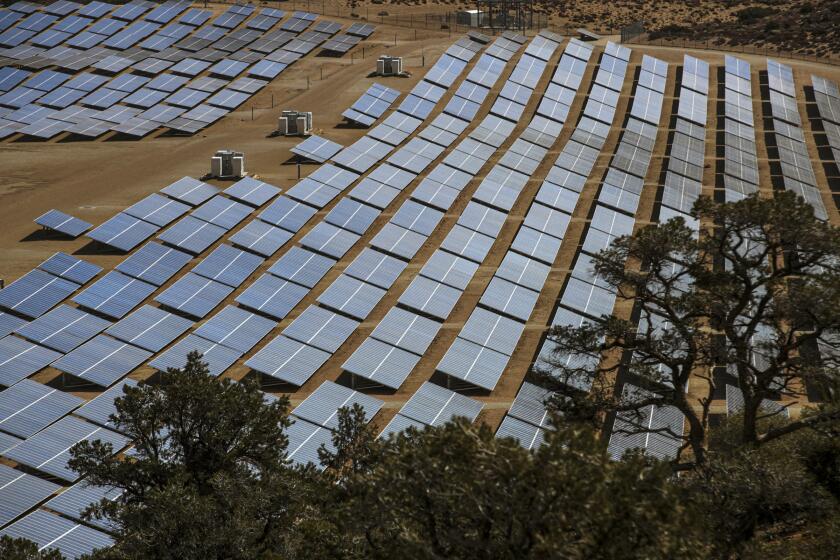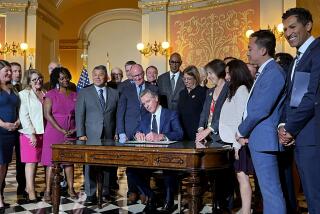Newsom has a plan to keep the lights on in California — using fossil fuels
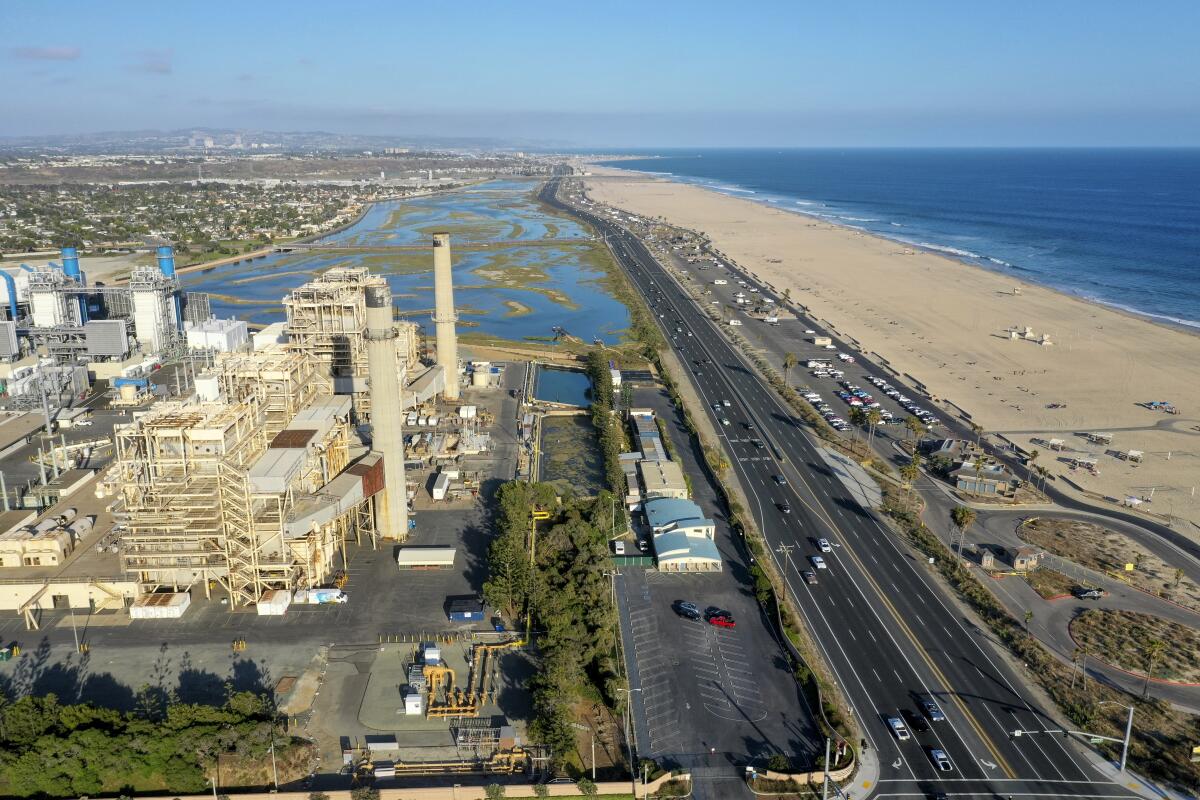
- Share via
A controversial plan from Gov. Gavin Newsom would reshape how business is done on the California power grid, potentially helping to extend the life of beachfront gas plants and the Diablo Canyon nuclear plant, making it easier for solar and wind farm developers to sidestep local government opposition, and limiting environmental reviews for all kinds of energy projects.
State lawmakers could vote as early as Wednesday night on the polarizing legislation, whose text was revealed late Sunday.
The bill would give the Department of Water Resources unprecedented authority to build or buy energy from any facility that can help keep the lights on during the next few summers — including polluting diesel generators and four gas-fired power plants along the Southern California coast that were originally supposed to close in 2020 but were rescued by state officials.
Those decisions would be exempt from the normal public input process under the California Environmental Quality Act — and from approval by agencies such as the California Coastal Commission and local air quality management districts.
A separate provision would allow companies building solar farms, wind turbines and lithium-ion batteries — as well as electric lines to connect those facilities to the grid — to opt in to an accelerated approval process that doesn’t require sign-off from county governments. State officials would be required to conduct environmental reviews and approve or deny those projects within nine months. Legal challenges to any project approvals would need to be resolved by state courts within another nine months.
Your guide to our clean energy future
Get our Boiling Point newsletter for the latest on the power sector, water wars and more — and what they mean for California.
You may occasionally receive promotional content from the Los Angeles Times.
The legislation is technically a follow-up to the state budget approved by lawmakers earlier this month. It’s part of the Newsom administration’s frenetic effort to address twin challenges: the risk of blackouts and the growing dangers of the climate crisis.
It’s been almost two years since brief rolling blackouts roiled the state on two brutally hot August evenings when there wasn’t enough electricity supply to power millions of air conditioners after the sun went down and solar panels stopped generating.
Electric utilities have managed to keep the lights on since then — barely. But preventing outages is only getting harder as fossil fuel emissions heat the planet, extreme drought drains hydropower reservoirs and worsening wildfires disrupt power lines.
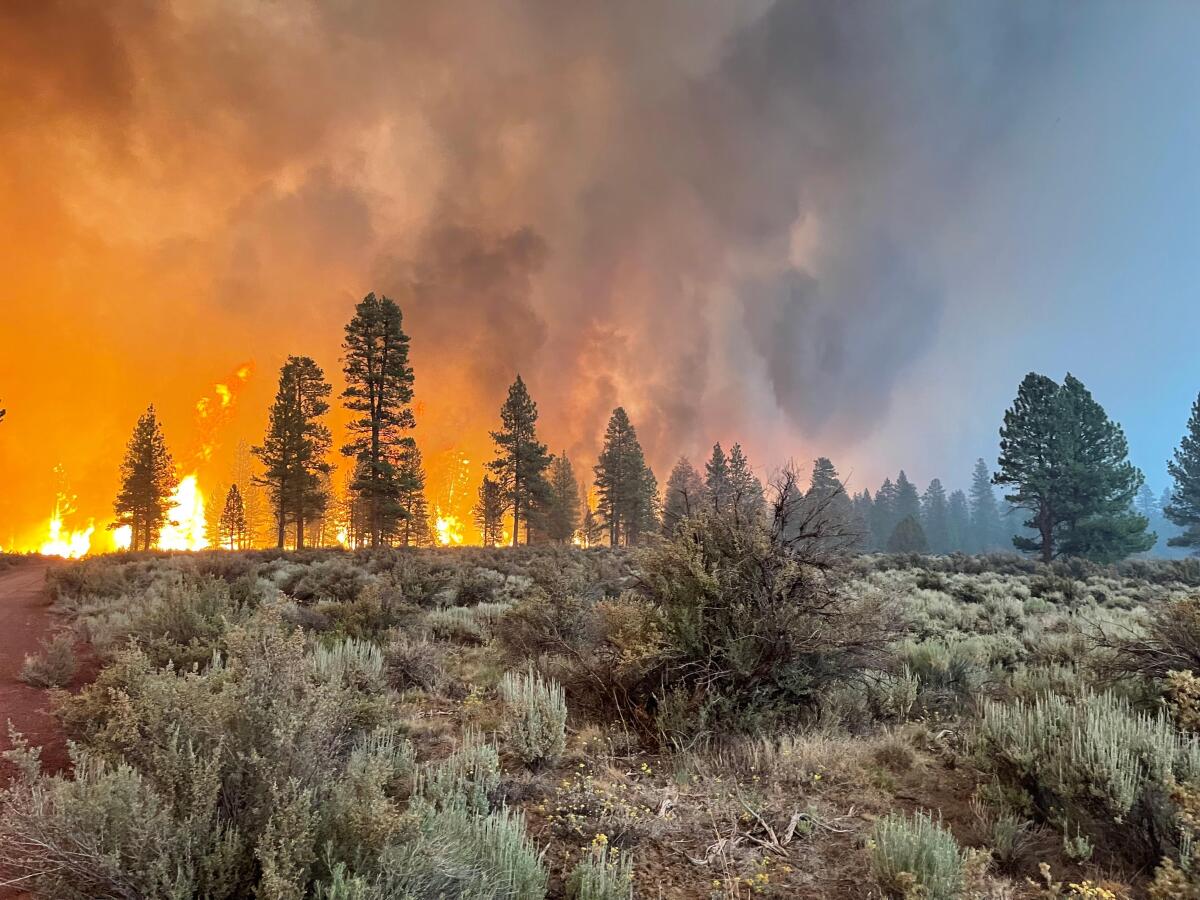
Newsom responded last month by asking lawmakers to approve a $5.2-billion “strategic electricity reliability reserve” that would pay for emergency power supplies over the next few years. But he surprised many observers with Sunday’s proposal to let the Department of Water Resources secure those supplies through a special review process at the California Energy Commission, which critics say could limit opportunities for public input and lead to more pollution in low-income communities of color.
The strategic reserve “is an insurance policy that will only be used when we face potential shortfall during extreme climate-change driven events (e.g. heatwaves, wildfire disruptions to transmission),” the Newsom administration says in a bill summary.
But the governor’s proposal startled climate activists, energy developers and local officials.
In an opposition letter Tuesday, two dozen groups — including the Sierra Club, the California Environmental Justice Alliance, the National Parks Conservation Assn. and Audubon — said Newsom’s plan has gone through hardly any public review.
Alexis Sutterman, energy equity manager at the California Environmental Justice Alliance, called the bill “incredibly dangerous.”
“It’s putting billions of dollars into keeping fossil fuel infrastructure online at a time when we should be doing everything we can to move away from fossil fuels, both for equity and the sake of our climate,” Sutterman said.
Read all of our coverage about how California is neglecting the climate threat posed by extreme heat.
Especially controversial are gas-fired power plants in Redondo Beach, Huntington Beach, Long Beach and Oxnard that were supposed to shut down by the end of 2020 under a decade-old policy requiring coastal power plants to stop sucking up large amounts of ocean water — a process known as “once through cooling” that kills fish and other marine life. In a series of decisions after the August 2020 rolling blackouts, the state water board agreed to let those plants keep operating three more years.
If the Legislature approves Newsom’s plan, the Department of Water Resources could buy energy from those plants beyond 2023 — or even buy the facilities outright, critics fear. That possibility has left Redondo Beach Mayor Bill Brand feeling blindsided.
“We feel double-crossed,” Brand said. “These retirement dates were set 12 years ago.”
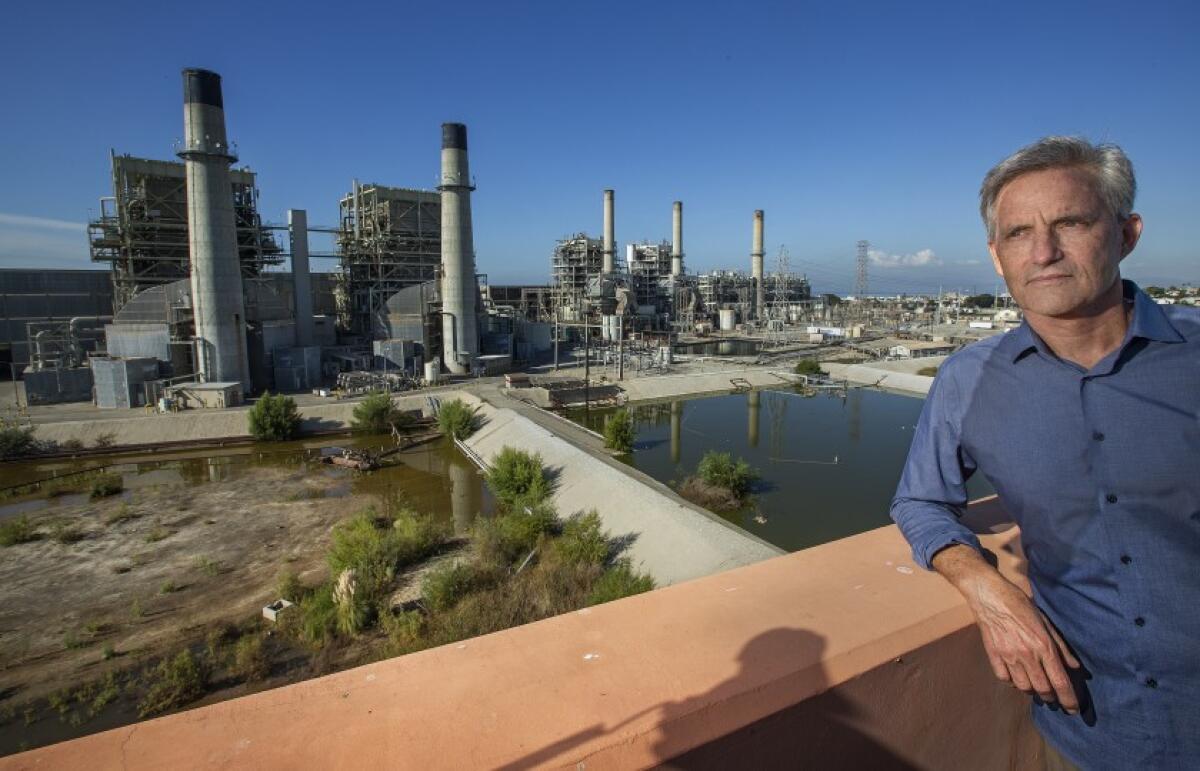
Ana Matosantos, Newsom’s cabinet secretary, told The Times the gas plants won’t be allowed to stay open after 2023 without approval from the state water board — an interpretation disputed by climate activists, who say the bill clearly states otherwise.
For the record:
7:26 a.m. June 29, 2022An earlier version of this article incorrectly stated that the Diablo Canyon nuclear plant is planned to close in 2026. Its closure is scheduled for 2025.
Matosantos also downplayed speculation that the bill would save the Diablo Canyon nuclear plant, currently slated to close in 2025. While she acknowledged that the Department of Water Resources could, in theory, buy some electricity from the nuclear plant, she said keeping it open past 2025 would require additional legislation, as well as approval from federal agencies.
Under Newsom’s proposal, the Department of Water Resources would also be able to contract for large energy storage projects such as lithium-ion batteries. Any newly purchased diesel backup generators would need to stop operating after July 2023.
Delaying the closure of Diablo Canyon would mark a shift for nuclear politics as the climate crisis worsens.
The bill also includes $200 million for programs that pay people and businesses to use less energy when the grid is stressed.
For longtime clean energy lobbyist V. John White, Newsom’s plan is a necessary evil. The Public Utilities Commission, he said, has put California in an impossible position by failing to line up climate-friendly resources that can provide power after sundown — such as batteries, geothermal plants and long-duration energy storage — even though the agency has known for more than a decade that the coastal gas plants would shut down, and since 2016 that the Diablo Canyon reactors would soon join them.
“These are extraordinary circumstances,” White said. “The tragedy here is we have plenty of wind and solar and geothermal to buy, but we waited so long that now we’re having trouble getting it online in time to meet the needs that we have.”
State officials say a 100% climate-friendly power mandate doesn’t necessarily mean no natural gas.
Even as Newsom scrambles to keep the lights on during the next few summers, White said, the governor needs to show stronger climate leadership and develop a long-term strategy to accelerate renewable energy while avoiding power supply emergencies.
The other controversial provision in Newsom’s proposal could help on that front, by allowing solar and wind developers to seek faster approval from the Energy Commission — although even those companies aren’t sure how much difference it would make.
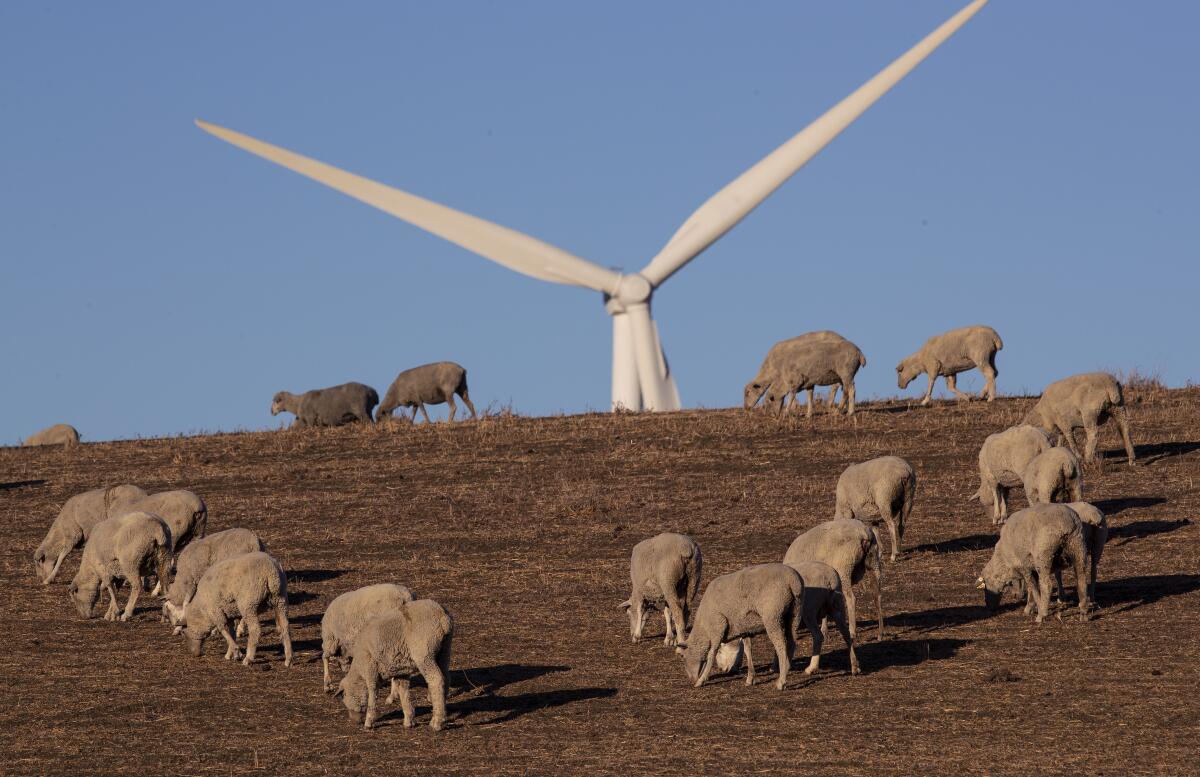
Local governments have at times emerged as a serious obstacle to clean energy, with San Bernardino County supervisors banning solar and wind farms on more than 1 million acres in 2019 and Shasta County supervisors set to vote next month on a wind farm moratorium. Shasta and Humboldt counties have both rejected proposed wind farms in recent years — an increasingly common occurrence across the Western U.S. as local residents raise concerns about environmental damage and diminished views.
Major solar companies have been focused on building better relationships with local officials rather than pushing to circumvent county approval, several people familiar with the industry’s thinking told The Times. The California Wind Energy Assn., on the other hand, supports Newsom’s plan to let the state handle permitting where developers prefer it, executive director Nancy Rader said.
The plan for speedier solar and wind approvals has also drawn support from the International Brotherhood of Electrical Workers. Developers who opt in to the streamlined process would need to hire union workers through project labor agreements.
“We think that’s a wise balancing of an option for developers who have their ducks in a row and want to go to the Energy Commission, which is extremely capable and competent and talented,” said Marc Joseph, an attorney representing IBEW.
Support our journalism
Your support helps us deliver the news that matters most. Subscribe to the Los Angeles Times.
Major environmental groups haven’t taken a position on Newsom’s proposal to streamline project approval, after an earlier provision that would have eliminated additional layers of review — including from the Coastal Commission — was removed.
Local governments, though, are furious.
In a letter opposing the bill, the California State Assn. of Counties, Urban Counties of California, Rural County Representatives of California and the League of California Cities said renewable energy facilities “can have enormous impacts on local communities.” They said the Energy Commission approval process is “overly broad, usurps local control, excludes local governments from meaningful involvement in major development projects within their jurisdictions, and could result in even more litigation.”
The Department of Water Resources pathway, meanwhile, is “an unprecedented law change with no policy hearing,” said Catherine Freeman, a legislative representative at the county association. She called it “a complete removal of local permitting.”
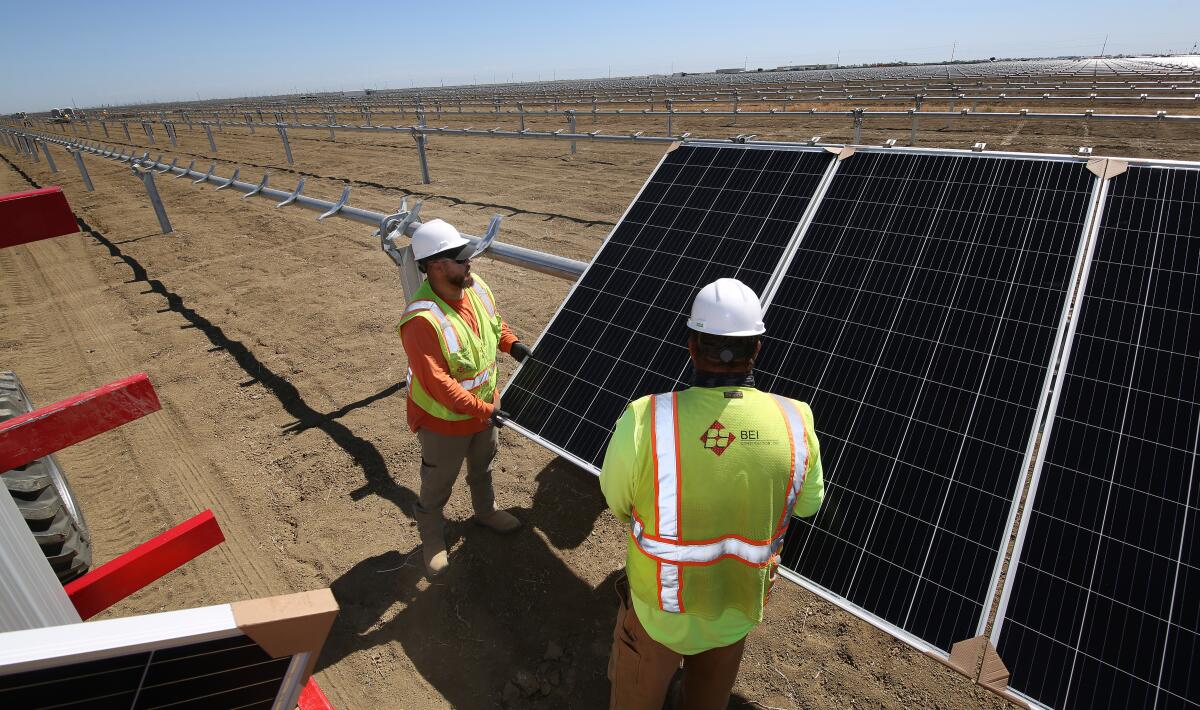
Even if the bill passes, California will have plenty of challenges trying to reach 100% clean energy by 2045, as required by state law — a timeline Newsom has said should be sped up. The state will need to build solar farms, wind turbines and other clean energy resources at an unprecedented rate — especially as the growth of electric cars and electric heating drives up power demand.
For the next few summers, all eyes will be on the California Independent System Operator, which is responsible for balancing supply and demand across most of the state — and calling for rolling blackouts if there’s not enough electricity to go around.
So was the grid operator involved in crafting Newsom’s proposal? That’s not entirely clear. Spokesperson Anne Gonzales said only that the agency “offered technical assistance and reviewed specific provisions that would require [our] involvement.”
“The strategic reserves are primarily meant to support reliability beginning in summer 2023,” she said in an email.

